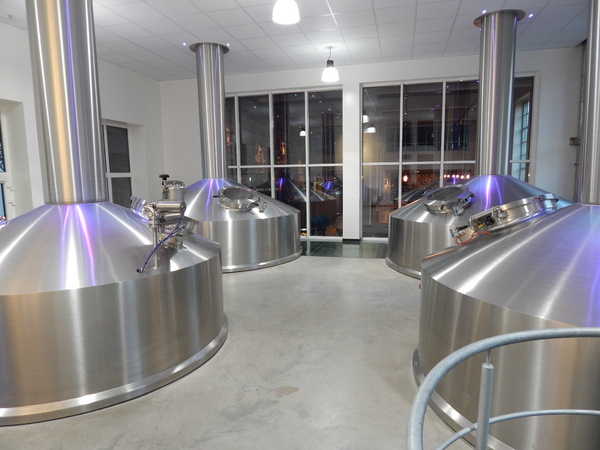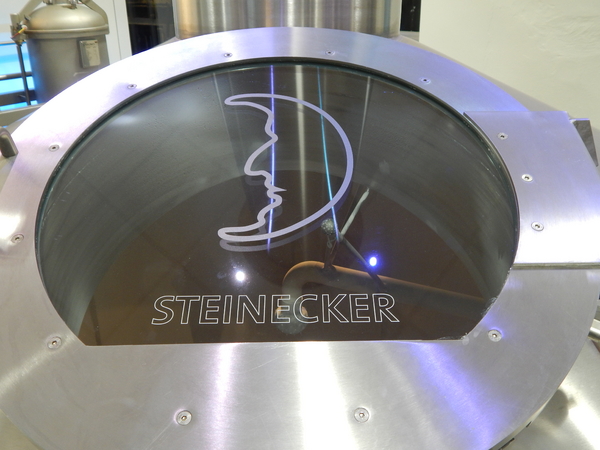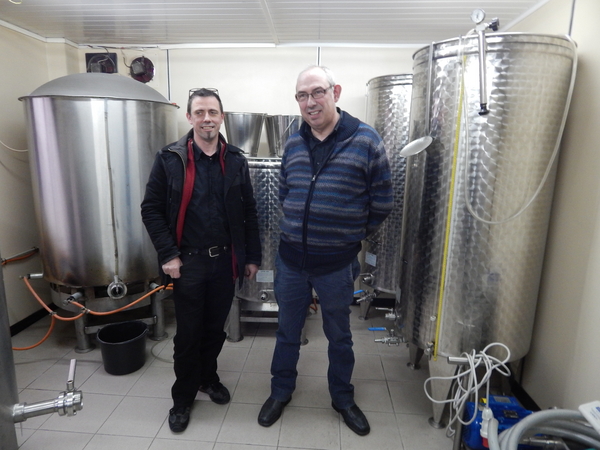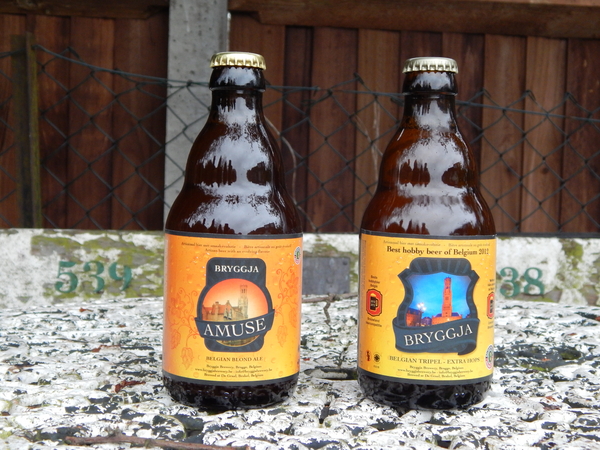Brewing is bouncing back in Bruges
Added: Friday, January 30th 2015

Brewing is bouncing back in Bruges. The magnificent world heritage city – and home to the Bruges Beer Festival (7-9 February: www.brugsbierfestival.be) -- will soon have three operating breweries.
The festival is run by BAB, the local section of Zythos, the Belgian beer drinkers’ movement. BAB takes its name from the biggest brewery in the city that was bought and closed by the country’s giant Stella Artois group, now AB InBev. BAB stood for Bière Aigle Belgica, a mix of French, Dutch and Latin. Aigle means eagle and it was the logo of the brewery.
It was a lager brewery and was bought and closed in the 1960s. There were some 20 breweries in Bruges in the 20th century but members of BAB told me that Interbrew, now AB InBev, wanted to flood all the bars in the city with Stella Artois and Jupiler and didn’t want competition to stand in the way. A number of other breweries went the same way as BAB.
But Bruges’ beer heritage is being restored. By 2016 there should be five breweries operating in the city, with two due to open this year. The Halve Maan – Half Moon – brewery reopened in 2005 and last year installed a new and impressive brewhouse to cope with demand for the beer.
The Half Moon brewery was founded in 1856 by Henri Maes and is now run his descendants, the Vanneste family. In the 20th century it became known as Straffe Hendrik and became part of the Riva brewing group, which moved production to its main plant in Dentergem in the 1980s.
But the Vanneste family restored both brewing and the Halve Maan name to Bruges and has won the right to brew two of the Straffe Hendrik beers, Tripel (9%) and Quadrupel (11%). The family has added two beers of their own design, based on 19th-century recipes, called Brugse Zot Blond (6%) and Brugse Zot Dubbel (7.5%).

Zot is a Flemish word meaning fool and comes from an old Bruges legend. In the 15th century, the city was home to a large number of mentally ill people and when the citizens asked the Austrian emperor Maximilian to build an asylum that would be called the Fools’ House he responded by saying, “Just close the walls – Bruges is full of fools”.
The new brewhouse has been built by the leading German company Steinecker and can be seen from the spacious bar and restaurant. It’s open for inspection (top and above: the Zot logo is built into the brewing kit) and is part of the daily tours that include many brewing artefacts from the 19th and 20th centuries, an open cool ship where the wort or sugary liquid was cooled before fermentation, and stunning views of Bruges from the roof.
Tours take place every day between 11-4 and cost 8 euro per person, which includes a glass of beer at the end in the bar. Excellent meals can be enjoyed in the restaurant, along with the full range of Zot and Straffe Hendrik beers: www.halvemaanbe.
Another name synonymous with Bruges brewing is also about to make a comeback. Bourgogne des Flandres (5%) is a blend of dark ale and lambic beer. The brewery opened in the 1860s but closed in the mid-1960s. The brand is now owned by the John Martins group, which owns Timmermans, the oldest lambic brewery in Belgium.
Anthony Martin, a descendant of the British founder of the company, has recently opened a small brewery in Waterloo and is now planning to restore brewing of Bourgogne des Flandres to Bruges. His plant is being built by CoEnCo – Construction Engineering Consultancy www.coenco.be – at Oostkamp, close to Bruges, and will be of classic Belgian design. The new brewery in Bruges will be close to the Bourgogne des Flandres beer shop where samples of the beer and the separate lambic and dark ale can be sampled.

A third brewery on the stocks is Bryggja, which will open in the spring in Assebroek just a few kilometres from Bruges: it uses the symbol of the Belfry in Bruges on its labels. The brewery is the result of four home-brewing friends winning a competition and deciding to go commercial. At the moment, their two beers – Amuse (6.5%) and Tripel (8.5%) – are brewed by the Kwibus Brewery near Ghent and Franky Brabandt and Hugo Gevaert (above), who will run Bryggia, will transfer the Kwibus plant to their site at Assebroek.
Kwibus is a “house brewery” in the true sense of the word. Danny Hoffenck runs a successful window cleaning business but at weekends and evenings brews in his garage. “The living room is my warm-conditioning room,” Danny says.
He produces bottle-conditioned beers – Blonde, Dark and Tripel – which we sampled in his “tasting room”, also known as the kitchen. He produces close to 5,000 bottles a week and – to the relief of his wife – is moving brewing from the house to a stand-alone site with new brewing equipment imported from China.
Franky and Hugo will open Bryggja (www.bryggjabrewery.be) on April First. All Fools Day may seem an inauspicious date but given the legacy of both brewing and idiocy in Bruges it could be timely.






